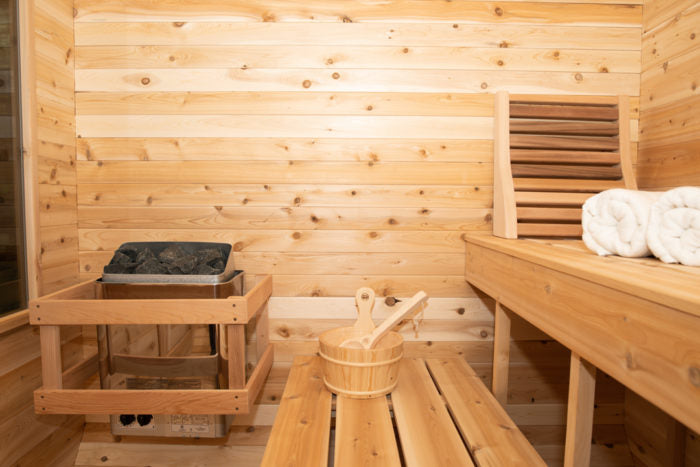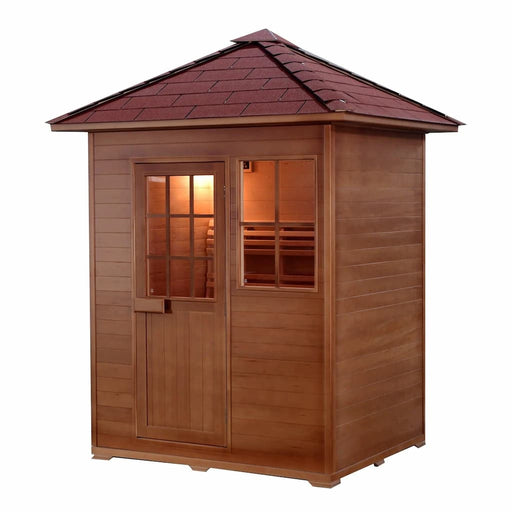Little Known Questions About Traditional Sauna.
The 7-Second Trick For Traditional Sauna
Table of ContentsIndicators on Traditional Sauna You Need To KnowFascination About Traditional SaunaTop Guidelines Of Traditional SaunaGetting The Traditional Sauna To WorkThings about Traditional Sauna
Many of the weight shed in a sauna is water loss and is re-gained upon rehydrating. Without a question sauna can be a crucial component of a healthy and balanced weight loss program. To look at the differences between standard and IR saunas, I will separate these right into proven, theoretical, and produced distinctions.Therefore, the best factor in the saunawhich is at the ceiling straight over the sauna heateris typically in between 185 and 190 F. Claims that a conventional sauna exceeds 200 F is simply not true and not relevant for electrical saunas offered in the United States. The temperature for a far-infrared sauna is generally established between 120 and 140 F; nonetheless, unlike the conventional sauna, the objective in and IR area is not to accomplish a high temperature.
As a result of this, the temperature difference is virtually irrelevant, since profuse sweating leads to both sauna types, however the approach of heating up the body is different. In an IR sauna the bather will certainly really feel warm and will certainly sweat profusely, but at much lower temperature levels (Traditional Sauna). Hence, if the goal is to invest longer time periods in the sauna, the IR sauna is a great choice
When a typical sauna has actually been effectively heated, the sauna walls are cozy, the air temperature has actually achieved established temperature level and the rocks are incredibly warmed. As an intriguing side note, the heated walls and the rocks are sending out far-infrared warm, combined with the warmed air, to create an "enveloping warm".
Not known Details About Traditional Sauna

When the high temperature is attained, the aspects cycle on and off to preserve the high temperature level. The majority of standard sauna customers delight in pouring water over the rocks to create heavy steam to increase sauna humidity levels. The benefits of putting water over the rocks consist of: making the area more comfortable, dampening the nasal flows, and allowing the usage of aromatherapy by blending essential oils with the water.

When the power goes into the body, it creates the body temperature to boost and ultimately leads to perspiration. In an infrared sauna it is necessary for the emitters/heaters to remain on nearly frequently. Because there is no mass of rocks to preserve heat, the sauna will certainly cool if the emitters shut down.
As discussed over, the sauna bather in an infrared space wants to position himself in front of operating emitters to obtain optimal take advantage of the warmth. The home heating time for both rooms can be really different, depending upon just how the rooms are made use of. For a typical sauna, a bather must allow 30-40 mins for the room to achieve a wanted temperature and to properly pre-heat the rocks.
Indicators on Traditional Sauna You Need To Know
A well created sauna will normally attain a temperature level of 150-160 F in about 30-40 minutes. For hotter temperature levels, the space may need to heat for a longer period.

Traditional saunas often tend to be larger (for this reason make use of more electrical power) than infrared saunas, although conventional saunas are definitely available in one and 2 person dimensions. For a two-person traditional sauna, 5x6 or 5x7 size is most preferred. The top bench can pleasantly seat two or three individuals and is also long sufficient to rest during the sauna session.
An Unbiased View of Traditional Sauna
The typical expense per kWH of power in the united state is roughly $0.11, so a 4.5 kW heating unit will set you back around $.50 to compete one hour, if the heating system runs continually for one hour. Usually a sauna heating unit will certainly compete 75% of the very first hour and 50% of succeeding hours on considering this post that the components cycle once the established temperature level is attained.

There is a rarely talked about difference in the social experience in between the two rooms. While our society has lost a few of the social benefit of the typical sauna experience, it can be really socially satisfying (Traditional Sauna). From family time in the sauna, to heart-felt discussions with better halves, to sauna partiesthe look at more info conventional sauna experience can result in intimate socializing
A Biased View of Traditional Sauna
Most greater end infrared rooms include tinted light therapy, sound systems and full-glass fronts.